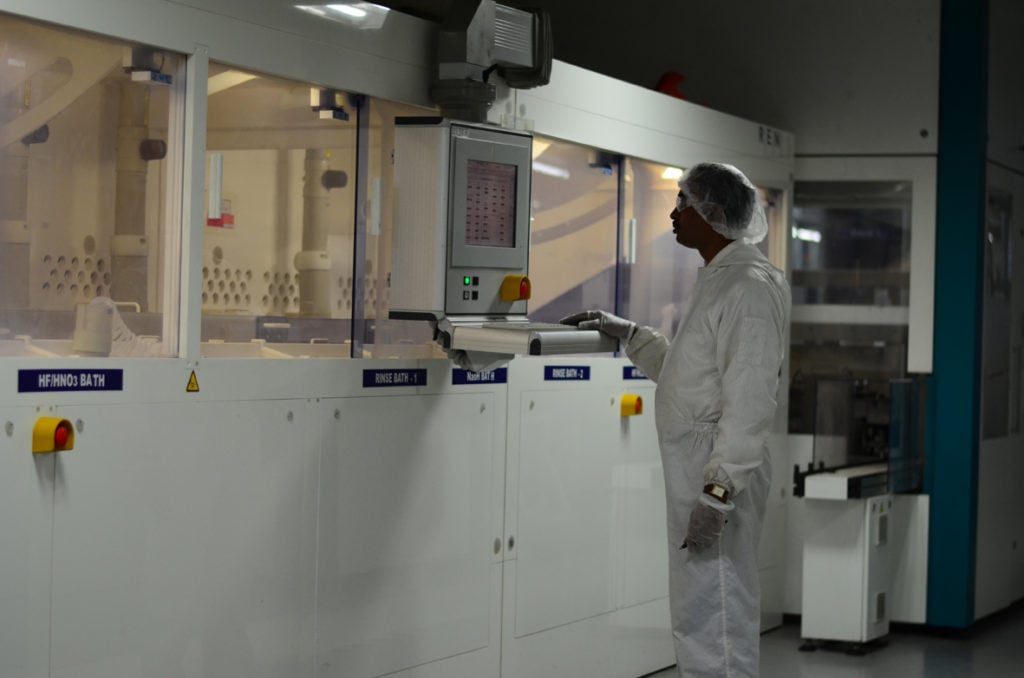
India’s Ministry of New and Renewable Energy (MNRE) has set up the minimum efficiency standards for cadmium telluride (CdTe) thin-film modules to be enlisted in the Approved List of Models and Manufacturers (ALMM) for solar PV modules.
The announcement from MNRE divides CdTe thin-film modules into three categories: utility or grid-scale power plants, rooftop and solar pumping, and solar lighting. For utility or grid-scale power plants, the required minimum efficiency is 19%, the highest among all categories.
Unlock unlimited access for 12 whole months of distinctive global analysis
Photovoltaics International is now included.
- Regular insight and analysis of the industry’s biggest developments
- In-depth interviews with the industry’s leading figures
- Unlimited digital access to the PV Tech Power journal catalogue
- Unlimited digital access to the Photovoltaics International journal catalogue
- Access to more than 1,000 technical papers
- Discounts on Solar Media’s portfolio of events, in-person and virtual
Or continue reading this article for free
For rooftop and solar pumping and solar lighting, the required minimum efficiencies are 18.5% and 18% respectively.
MNRE also updated minimum efficiency thresholds for crystalline-silicon solar PV modules. For utility or grid-scale solar PV plants, the minimum efficiency should reach at least 20%. For installations on rooftops and for solar-powered pumping systems, the efficiency should be at least 19.5%. The required minimum efficiency for solar lighting systems is 19%.
In addition to the minimum efficiency standards, MNRE expanded the ALMM by adding Tata Power Solar, which will account for 2,525MW of the newly added capacity of the expanded ALMM.
ALMM was launched by MNRE in 2019, consisting of of LIST-I, specifying models and manufacturers of solar PV Modules, and LIST-II, specifying models and manufacturers of solar PV cells. However, the latter has not been issued yet. Only the solar PV models and module manufacturers listed on the ALMM can be used for solar projects in India sponsored or subsidised by the government.
MNRE announced that ALMM was suspended from March 2023 due to concerns over an inadequate supply of domestically made modules to meet demand. Thus, projects commissioned by the end of March 2024 will be exempted from the requirement of procuring solar PV modules from ALMM. The ALMM was due to be reimposed from 1 April, but in February 2024, MNRE suspended the reimposition of ALMM “till further orders”.
Industry observers have suggested the government needs to further clarify the details of the ALMM before reimposing it, so as to avoid becoming overwhelmed by petitions and disputes and dampening capacity additions in India.
India has been increasing its installed solar capacity over the past year, with solar PV accounting for 55.8% of the total power generation capacity added to the Indian grid in 2023. According to data from the Institute for Energy Economics and Financial Analysis (IEEFA), India added 10.01GW of solar PV capacity over the year, a decrease of almost 4GW from the 13.9GW added in 2022. This represented a 28.2% decline year-on-year, which IEEFA attributes to project commissioning delays as a result of procurement issues from the ALMM policy.
However, India’s renewables capacity is poised to increase to 170GW by March 2025 for a number of reasons, including the decline in solar PV cell and module prices, according to a study conducted by Indian rating agency ICRA. ICRA added that renewable additions will likely continue after March 2025 thanks to the significant improvement in tendering activity in the current fiscal year, with over 16GW projects bid out so far.
A further 17GW bids will be from the tenders launched by the central nodal agencies. This is in line with the 50GW annual bidding trajectory announced by the government of India in March 2023.
US CdTe thin-film manufacturer First Solar expanded to India recently as it opened a 3.3GW new manufacturing plant in January 2024. Located in Tamil Nadu, the manufacturing plant produces First Solar’s Series 7 thin-film CdTe modules. It added that the modules were developed at its research and development centres in the US and optimised for the Indian market.
